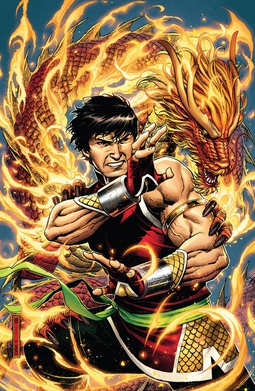Comics have for some time been praised as a special type of visual narrating, mixing creativity and story in a way that enamors perusers, everything being equal. Behind the energetic characters and charming plots lies a universe of imaginative expertise, inventiveness, and devotion. In this investigation of “The Creativity Behind Comics,” we will dive into the mysteries of comic book delineations and find what makes this medium so convincing.
The Introduction of Comic Book Delineations
Comic books, as we probably are aware them today, have a rich history that traces all the way back to the mid twentieth hundred years. The primary comic books basically included assortments of funny cartoons from papers. They were frequently entertaining and focused on an expansive crowd. The craftsmanship in these early comics was straightforward and centered around conveying jokes and gags.
Nonetheless, as the medium advanced, so did the creativity behind it. Specialists like Will Eisner and Jack Kirby started to explore different avenues regarding the visual parts of comics, pushing the limits of what was conceivable. They presented dynamic board formats, inventive page plans, and definite representations that rejuvenated characters and stories.
The Life systems of Comic Book Outlines
Penciling: The Groundwork of Comics Craftsmanship
One of the critical mysteries behind comic book outlines is the fastidious interaction that beginnings with penciling. The pencil craftsman, frequently alluded to as the “penciler,” portrays the whole comic, including characters, foundations, and articles. This step is fundamental for laying out the visual account.
Penciling requires a sharp eye for detail, viewpoint, and life systems. Craftsmen should guarantee that characters’ extents stay steady all through the story and that the foundations supplement the account. The degree of accuracy required is surprising, as each board should convey the planned inclination and activity.
Inking: Adding Profundity and Definition
Subsequent to penciling, the following critical step is inking. Inkers utilize different apparatuses, like brushes and pens, to follow over the pencil lines with dark ink. This interaction adds profundity, definition, and clearness to the representations. Inkers assume an imperative part in laying out the mind-set of the comic through their utilization of concealing, cross-bring forth, and line weight.
Inkers should likewise focus on consistency, as their work ought to line up with the penciler’s vision. The exchange among pencil and ink is a work of art in itself, with inkers frequently transforming the end result.
Shading: Carrying Dynamic quality to the Page
When the inked pages are prepared, now is the ideal time to inject them with variety. Colorists utilize advanced instruments or customary techniques to add tints, tones, and concealing to the outlines. This step rejuvenates the characters and conditions, upgrading the close to home effect of the story.
Shading in comics is an unobtrusive yet incredible asset. It can establish the vibe for various scenes, convey feelings, and guide the peruser’s consideration. The decision of variety range is basic, as it adds to the general stylish and air of the comic.
Lettering and Typography: The Unrecognized Yet truly great individuals
While the actual delineations are a blowout for the eyes, lettering and typography assume a pivotal part in directing the peruser through the story. Letterers cautiously place discourse, subtitles, and audio effects inside the boards, guaranteeing that the text supplements the work of art and streams flawlessly.
Picking the right textual styles, sizes, and styles is a craftsmanship in itself. Letterers should work out some kind of harmony among coherence and style, ensuring that the text improves the peruser’s insight without eclipsing the visuals.
The Combination of Workmanship and Narrating
What separates comics is the consistent combination of workmanship and narrating. The creativity behind comics isn’t just about making outwardly dazzling pictures; it’s tied in with conveying a story, evoking feelings, and drawing in the peruser’s creative mind.
Comic book craftsmen are experts of visual narrating. They use board formats, sythesis, and pacing to control the peruser’s insight. A very much created comic can make you snicker, cry, or consider life’s most profound inquiries, all through the force of pictures and words.
End
“The Masterfulness Behind Comics: Uncovering the Mysteries of Comic Book Outlines” is an excursion into a reality where inventiveness has no limits. From the underlying pencil portrayals to the last lettering, each part of comics imaginativeness adds to the enchantment of this medium.
Comic book delineations are a demonstration of the expertise, commitment, and enthusiasm of the specialists who rejuvenate stories. They advise us that comics are not simply ink on paper; they are an exceptional type of narrating that rises above language and culture, charming perusers across the globe. In this way, the following time you get a comic book, pause for a minute to see the value in the masterfulness behind the pages, and allow yourself to be moved by the wizardry of comics.



